Carnivorous plant: all there is to know to start cultivation [ENG-ITA]
Today I want to talk in general about how to grow carnivorous plants, for those who want to start a wonderful experience in this world!
First we must know their origins: why carnivorous plants are carnivorous?
Native to marshlands, peat bogs, cliffs and slopes, these plants find their habitat in places without nourishment such as nitrogen (N) essential element for a correct development. Precisely for this reason, over time they have had to adapt, transforming their leaves into real traps with mechanisms very different from each other, in order to capture the prey and complete the missing nutrients.
With which plants can I start my cultivation?
To know which plants to choose, you must first know the climate of your country. The carnivorous plants grow almost in all the climatic zones and can be found at various heights (over 2000 m.s.l.m.) We can then classify the carnivorous plants in:
1. tropical carnivorous
2. subtropical carnivorous
3.temperate carnivorous
This shows us already from which plants we can start, for example, in Italy, having a temperate climate, we will begin our cultivation with temperate carnivores. This is because most of them, with the approaching of adverse seasons such as autumn and winter, in order to cope with low temperatures, protect themselves in a hibernacle by interrupting the vegetative phase to resume it in the following spring. To start, I recommend the genres "Dionea" and "Sarracenia".
Dionea flowers 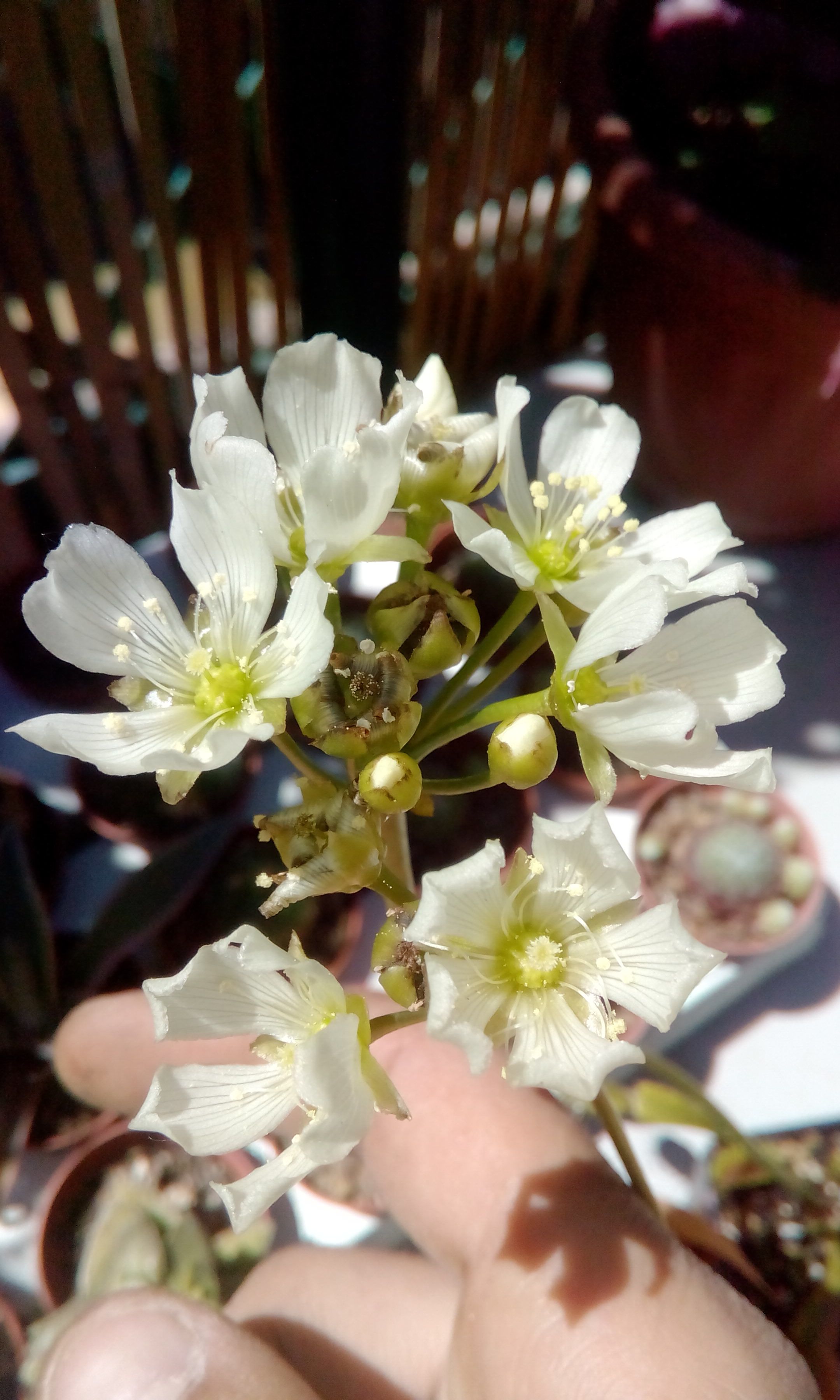 .
.
Sarracenia leucophylla.
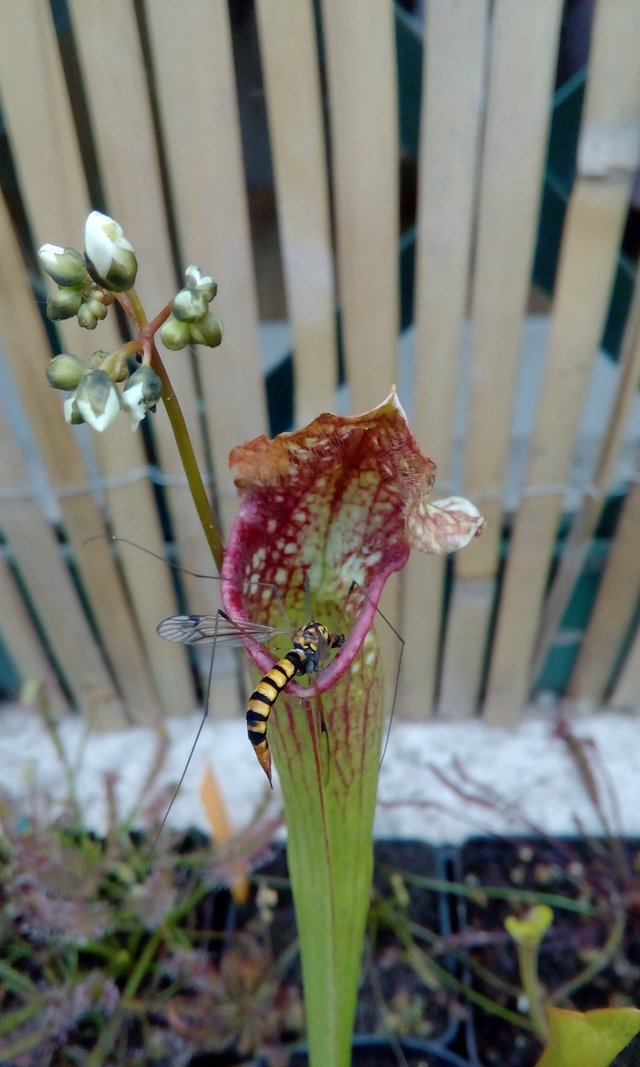
What are the parameters to be considered for good cultivation?
- Choice of sphagnum peat. Carnivorous plants are generally cultivated in sphagnum peat (we will treat this topic very important for environmental damage due to the continuous consumption of peat fuel and not), an organic compound that requires precise parameters: organic matter higher than 90%, Nitrogen lower than 1%, Ph Very acid that does not exceed 3.5. Generally, peat is mixed in percentages 50 and 50 (%) with perlite, an inert material that gives greater oxygen supply to the substrate.
- Water. Water is very important for the cultivation of carnivorous plants. Being plants that live in swampy areas, peat bogs, their need to have available water is always constant. Therefore they are plants that must be grown in tanks, where the water must never fall below 2 cm from the plant pot. The water to be used must be rain or distilled, that of the tap due to the high content of calcium is not good and would compromise the plant within a few weeks.
- Exposure. So much sun!
- Pot. The choice of the pot is also important, usually square plastic pots are used, which tend to take up less space, but above all they guarantee a much more humid substrate than the earthenware, which would breathe too much in the summer resulting in more watering (as we have said must always be soaking!)
ALL THAT WRITTEN ARE GUIDELINES FOR THE CULTIVATION OF CARNIVORE PLANTS; THIS DOES NOT HAVE TO SAY THAT IT MUST BE CULTIVATED ALL THE SAME WAY!
ALL PHOTOS ARE MADE BY ME
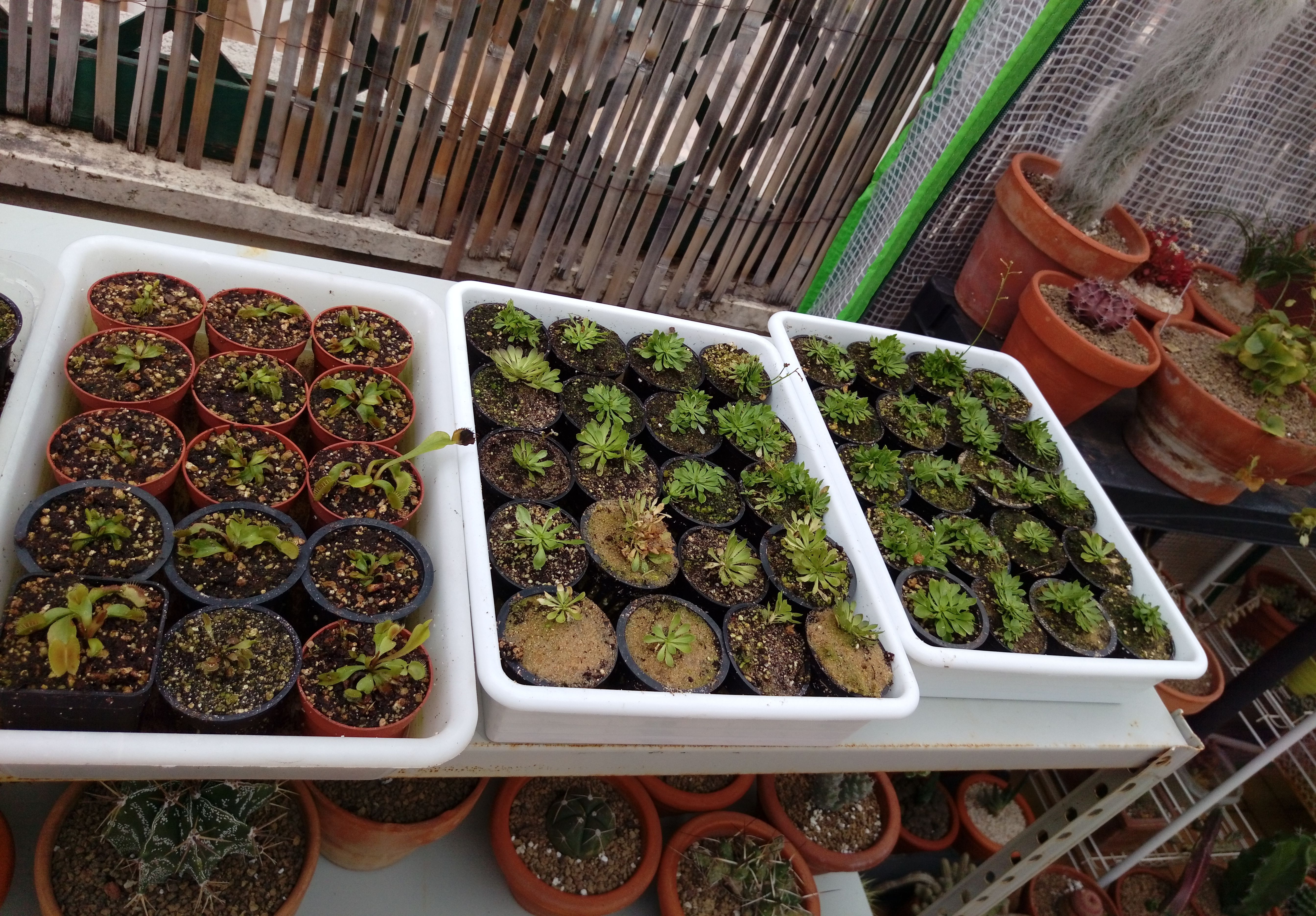
Oggi volevo parlare in linea generale di come si coltivano le piante carnivore, per chi volesse iniziare una bellissima esperienza in questo mondo!
Per prima cosa dobbiamo sapere le loro origini: perche le piante carnivore, sono carnivore?
Originarie di luoghi palustri, torbiere, scogliere e pendii, queste piante trovano il loro habitat in luoghi privi di nutrimento come ad esempio l'azoto (N) elemento fondamentale per uno sviluppo corretto. Proprio per questo, nel corso del tempo si sono dovute adattare, trasformando le loro foglie in vere e proprie trappole con meccanismi molto differenti gli uni dagli altri, per poter catturare le prede e completare i nutrimenti mancanti.
Ora possiamo cominciare! Con quali piante posso iniziare la mia coltivazione?
Per scegliere le piante da cui iniziare, bisogna prima conoscere il clima del proprio paese. Le piante carnivore crescono quasi in tutte le fasce climatiche e si possono trovare a varie altezze (oltre i 2000 m.s.l.m.) Possiamo classificare quindi le piante carnivore in:
- .carnivore tropicali
- .carnivore sub tropicali
- .carnivore temperate
Questo ci indica già da quali piante possiamo iniziare, ad esempio, in Italia, avendo un clima temperato, inizieremo la nostra coltivazione con carnivore temperate. Questo perché la maggior parte di esse, con l'avvicinarsi delle stagioni avverse quali autunno e inverno, per poter far fronte alle basse temperature, si proteggono in un ibernacolo interrompendo la fase vegetativa per riprenderla nella primavera successiva. Per iniziare consiglio i generi "Dionea" e "Sarracenia".
Trappola a "scatto" di una Dionea. 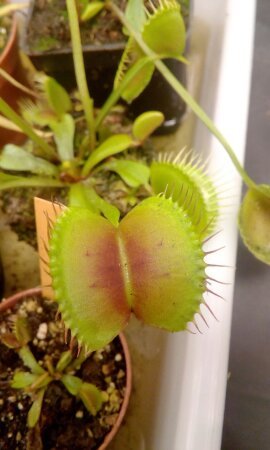
Ascidio di una Sarracenia leucophylla. 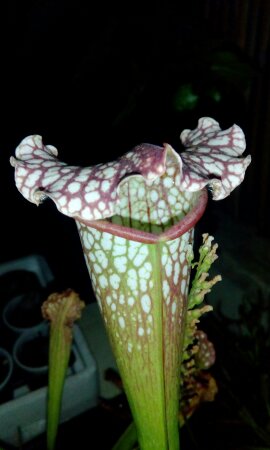
Quali sono i parametri da tenere in considerazione per una buona coltivazione?
- Scelta della torba acida di sfagno. Le piante carnivore si coltivano generalmente in torba acida di sfagno (tratteremo in altri post questo argomento molto importante per i danni all'ambiente dovuti al continuo consumo di torba combustibile e non), un composto organico che richiede parametri ben precisi: sostanza organica superiore al 90%, Azoto inferiore all 1%, Ph Molto acido che non supera i 3,5. Generalmente la torba viene mescolata in percentuali 50 e 50 (%) con la perlite, materiale inerte che conferisce maggior apporto di ossigeno al substrato.
- Acqua. Molto importante per la coltivazione delle piante carnivore è l'acqua. Essendo piante che vivono in zone paludose, torbiere, la loro necessità di avere acqua a disposizione è sempre costante. Pertanto sono piante che devono essere coltivate in delle vasche, dove l'acqua non deve mai scendere sotto i 2 cm dal vaso della pianta. L'acqua da usare deve essere piovana o distillata, quella del rubinetto a causa dell'elevato contenuto di Calcio non è buona e andrebbe a compromettere la pianta nel giro di poche settimane.
- Esposizione. Tanto tanto sole!
- Vaso. Importante è anche la scelta del vaso, generalmente si usano vasi in plastica quadrati, che tendono ad occupare meno spazio, ma soprattutto garantiscono un substrato molto più umido rispetto al coccio, che andrebbe a traspirare troppo in estate con conseguenza di maggior innaffiature (come abbiamo detto devono essere sempre ammollo!)
TUTTO QUELLO SCRITTO SONO LINEE GUIDA PER LA COLTIVAZIONE DELLE PIANTE CARNIVORE; CIO NON VUOL DIRE CHE DEBBANO ESSERE COLTIVATE TUTTE CON LO STESSO MODO!
TUTTE LE FOTO SONO REALIZZATE DA ME
Welcome to Steem @cooltivar.
Do read A thumb rule for steemit minnows - 50:100:200:25 for starter tips.
Spend time reading Steem Blue Paper to know how Steem blockchian works and if you still have any queries ask them on our Ask me anything about Steemit post and we will try to answer that.
All the Best!!!
Ciao @cooltivar, hai per caso visto l'articolo di @davidrhodes124 sulle piante carnivore? E' molto interessante per capirle meglio. Si può trovare qui.
Ciao @yvesoler ti ringrazio tanto, vado sempre cercando persone con stessi interessi, grazie!
Prego! Siamo qui per condividere esperienze e aiutarci, vero?!
Si e come posso da computer non vedo l'ora di leggere qualche tuo articolo che ho individuato sulle piante! =P
Sono curiosa sapere che ne pensi! :)
grazie per l'articolo! ho una domanda, per la cura della pianta basta innaffiarla e seguire le tue linee guida o è necessario anche nutrirla con piccoli insetti?
Vorrei coltivare una Dionea
La dionea va benissimo per iniziare, comunque no tranquillo, il fatto di riuscire a catturare gli insetti è soltanto una cosa in più per la pianta ma vive benissimo anche senza catturare. Qualora prendessi una Dionea una cosa importante da non fare è "giocare" con le trappole facendole chiudere senza nulla all'interno, questo provoca stress alla pianta ed un dispendio di energie enorme per non ottenere nulla!
Quindi ricapitolando serve tanto sole e terreno torbido. Cioè comporterebbe lo sviluppo di tanti moscerini e zanzare, che poi verranno mangiati dalla pianta. Avrei in soldoni, la casa invasa da insetti o no?
Ahahahaaha mi fai senti male! Diciamo che nelle vasche avrai un po di larve di zanzara tigre, ma finisce li, non attirerai altri insetti. L unico fastidio è appunto che avrai un pô piu di zanzare tigri per casa, ma altri insetti no assolutamente.. Anzi le carnovore difficilmente vengono attaccate da cocciniglia, afidi, pidocchi...
welcome to steemit,
Get to know how to earn more on your posts and get more followers.
Make new friends and interact.
We can share our thoughts.
In the steemit school, we have ultimate contest challenges where you get to win and make investments.
You need support from a community to grow and earn easily on steemit.
I recommend one for you.
Meet over 3k + steemians.
Steemit is a business, we will teach you how to succeed
join the steemit school on discord https://discord.gg/pqWrzBn
Hello dearie..
Welcome to steemit, to interact and get to grow better on steemit, find your niche and be educated on steemit...do well to join us on our Steemschool discord channel using this link https://discord.gg/2F74XX9
Look forward to seeing you there.
Welcome to Steemit @cooltivar!
I wish you much success and hope you find Steemit to be as rewarding and informative as I have.
Here are some links you might find useful.
Your stats on SteemNow
Your stats on SteemWorld
Your stats on SteemD
How to use Minnow Booster
How does Steemit actually work?
Introbot is hosted and managed with donations from @byColeman to help make your journey on Steemit be truly rewarding. Your feedback is always welcome so that we may improve this welcome message.
Oh yea, I have upvoted you and followed you. Many blessings from @introbot & @bycoleman